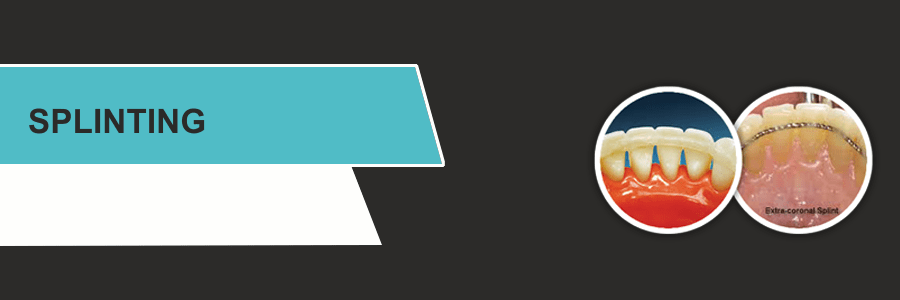
What is splinting treatment?
Splinting:
It is defined as the joining of two or more teeth with a rigid unit by means of fixed or removable restorations.
Splint :
It is defined as an appliance used for immobilization of injured or diseased parts.
Requirements of an Ideal Splint:
- It should allow direct application in the mouth without delay due to laboratory procedures.
- It should not traumatize the tooth during application.
- It should immobilize the injured tooth in a normal position.
- It should provide adequate fixation throughout the entire period of immobilization.
- It should neither damage the gingiva nor predispose to caries.
- It should not interfere with occlusion.
- It should not interfere with endodontic treatment.
- It should fulfill aesthetic demands.
What are the Different Types of Splints:
- Fixed Splints
- Removable Splints
What are the Objectives Of Splinting:
- It provides rest.
- For redirection of forces – Forces of occlusion are redirected in a more axial direction over all the teeth included in the splint .
- For redistribution of forces – Redistribution ensures that forces do not exceed adaptive capacity .
- To preserve arch integrity – Splinting restores proximal contacts reducing food impaction & consequent breakdown .
- Restoration of functional stability – Restores a functional occlusion , stabilizes the mobile teeth & increases masticatory comfort .
- Psychologic well being – Gives the patient comfort from mobile teeth thereby giving him the sense of well being .
Indications:
- It is used in the treatment of dento-alveolar & mandibular fractures.
- It stabilizes moderate to advanced tooth mobility that cannot be reduced by other means.
- It stabilizes teeth after acute dental trauma.
Contraindications:
- Insufficient number of firm or sufficiently firm teeth to stabilize mobile teeth.
- Prior occlusal adjustment cannot be done on teeth with occlusal trauma or occlusal interference.
- Patients who don’t maintain good oral hygiene.
